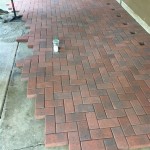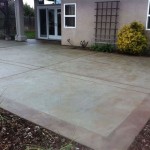How to Level Yard for a Paver Patio
A well-constructed paver patio can offer a stunning and durable addition to any outdoor space. However, before you can begin laying pavers, it's crucial to ensure the ground is level. Uneven ground can lead to trip hazards, water pooling, and uneven paver settling, ultimately compromising the longevity and aesthetic appeal of your patio. This guide will walk you through the steps involved in leveling your yard for a paver patio, ensuring a smooth and successful installation.
1. Defining the Patio Area and Assessing the Existing Grade
The first step is to determine the precise location and dimensions of your desired patio area. Use stakes and string to mark out the boundaries of the patio, ensuring it aligns with your vision and complements the existing landscape. Once the area is defined, carefully assess the existing grade. Identify any significant slopes, depressions, or bumps within the patio area. You can use a level or a long straight board to determine the high and low points within the designated space.
Measure the height difference between the high and low points. If the difference is minimal, typically less than an inch, you might be able to achieve a level surface through soil manipulation alone. However, for significant grade variations, consider using a combination of soil removal, fill material, and potentially even compacting the ground to ensure a stable and level base. Remember to factor in the thickness of the paver base and sand layer when calculating the necessary leveling adjustments.
2. Preparing the Base for the Paver Patio
Once you have assessed the existing grade and determined the necessary leveling adjustments, it's time to prepare the base for your paver patio. This step involves removing excess soil, adding fill material, and compacting the ground to create a stable and level foundation.
If you need to remove excess soil, use a shovel or a mechanical excavator to dig out the designated areas. Be cautious not to remove too much soil as this could lead to settling issues later. Conversely, if you need to add fill material, use a combination of gravel, sand, or a readily available base material. Ensure the fill material is well-compacted to prevent future settling. For larger projects, consider using a compactor or plate tamper to achieve optimal compaction levels.
3. Establishing a Level Surface
With the base prepared, it's time to establish a level surface for your paver patio. This step involves meticulously spreading and compacting the fill material to achieve the desired grade. Start by using a line level or a string line to establish a reference point at the desired height throughout the patio area. This reference point will serve as a guide for leveling the base material.
Spread the fill material evenly across the patio area, ensuring a consistent depth. Use a rake or a landscape rake to smooth out the material and achieve a consistent profile. As you spread the fill material, use a level to check for any uneven spots. Adjust the fill level as needed, adding or removing material to achieve a level surface. Once the fill material is spread evenly, compact it thoroughly using a plate tamper or hand tamper to ensure a stable foundation for your pavers.
4. Ensuring Water Drainage
While aiming for a level surface, it's equally important to ensure proper water drainage. If your patio is located in a low-lying area, consider creating a slight slope to direct water away from the patio. This can be achieved by adding a slight slope to the base material during the leveling process. Aim for a slope of about 1/4 inch per foot, ensuring that water flows away from the patio area to prevent pooling and potential damage to the pavers.
5. Final Touches and Inspection
Once the base is leveled, thoroughly inspect the surface for any uneven spots or imperfections. Address any issues by adding or removing fill material, followed by compacting the surface again. Remember that any remaining unevenness will be visible in the finished paver patio. Ensure a smooth and consistent surface before moving on to the paver installation process.
By meticulously preparing the base, you can ensure a stable and level foundation for your paver patio, resulting in a durable and beautiful addition to your outdoor space.

Leveling The Ground For Your Paver Patio Pavertime
Dammann S Garden Company Diy Series How To Install Level Pavers And Patio Stones

How To Level The Ground For Pavers 15 Steps With Pictures

Level Your Paver Base Outdoor Diy From Home Work With Hank
Dammann S Garden Company Diy Series How To Install Level Pavers And Patio Stones

Looking For Advice On Building A Ground Level Deck Or Stone Paver Patio Doityourself Com Community Forums

Urban Landworks Blog

3 Reasons On Why You Need To Level The Ground For Your Patio Tomahawk Power

Paver Patios An Inexpensive Guide To A Backyard Makeover

7 Landscape Design Ideas For A Multi Level Paver Patio In Lewis Center And Dublin Oh Areas Arj
Related Posts








